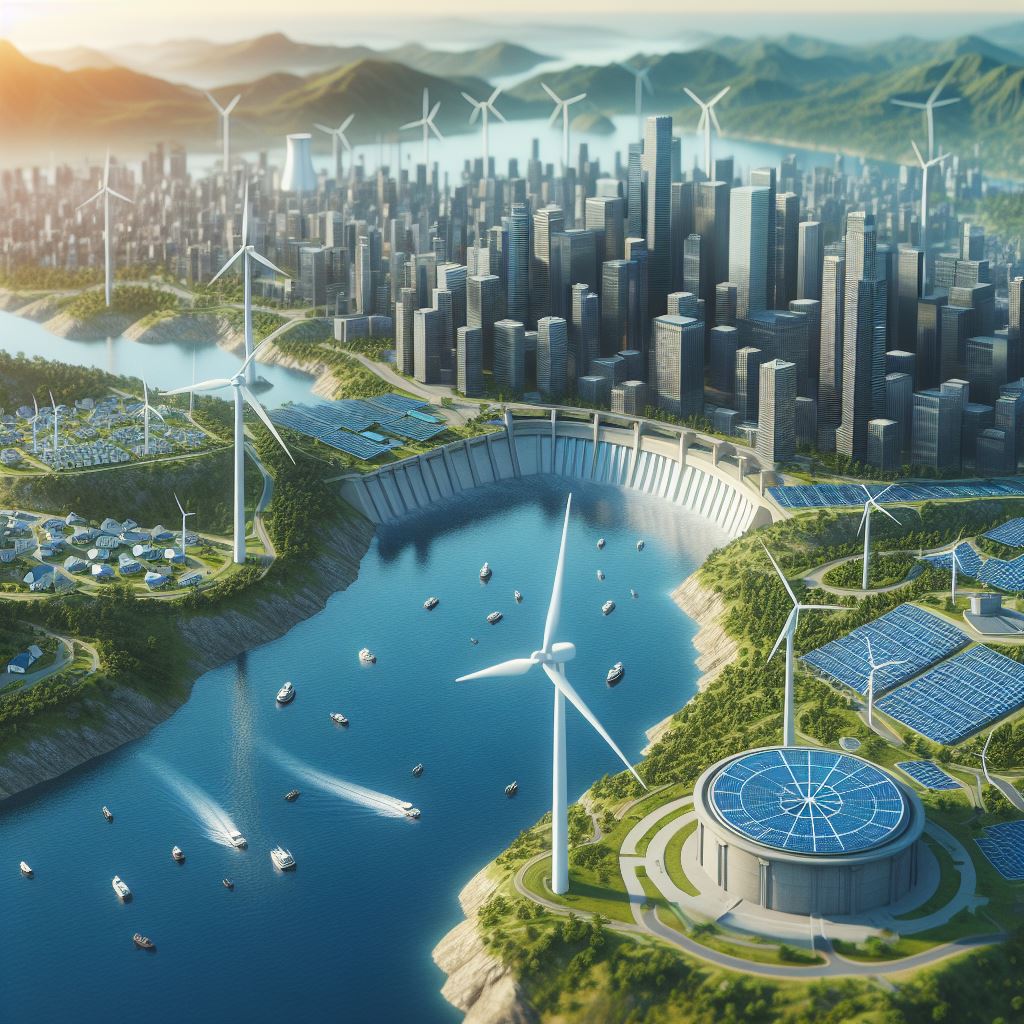Nowadays, the energy sector is constantly changing, mainly because of the emergence of companies proposing new solutions to offer cleaner energy (generated from renewable sources), aiming to improve energy efficiency and minimize the negative impact on the environment. The following are the main types of renewable energies.
Hydroelectric Power
Hydroelectric power is the world’s oldest and most widely used type of renewable energy. It harnesses the potential energy of water to move the blades of one (or more) turbines to generate electricity. One of the most widely used methods of harnessing the power of water is through dams, hydroelectric companies can control the amount of water they wish to pass through the turbines.
However, water resources must be available to install a hydroelectric infrastructure, and the power generated may vary, so not all places are ideal for this type of installation. It is essential to highlight that China is one of the largest hydroelectric energy producers because it has the largest hydroelectric dam in the world, known as The Three Gorges Dam on the Yangtze River. We can also mention Brazil, India, Canada, the United States, and Russia as other countries with the most significant hydroelectric power at a global level.
Geothermal Energy
Geothermal energy comes from the Earth’s internal heat, which can generate electricity through geothermal power plants or direct heating through heat exchange systems.
Among the primary types of geothermal plants are Dry Steam Systems (use steam directly from underground to drive turbines), Flash Systems (use hot water at high pressure to produce steam to drive turbines), and Binary Systems (use fluids with lower boiling points than water to transfer heat, causing the resulting steam to drive turbines). It is important to note that due to the necessary infrastructure and geographic location, this type of energy is less accessible.
Biomass energy
Biomass energy comes from decomposing organic matter, such as agricultural, forestry, and urban waste. Biomass can produce biogas and biofuels or generate electricity through combustion.
Among the best-known biofuels are Bioethanol (alcohol produced from fermented sugars and starches from corn, sugar cane, and sugar beet), Biodiesel (fuel made from vegetable oils such as soybean, palm, canola, and animal fats), Bio-butanol (alcohol produced from the fermentation of cellulose-rich biomass) and Bioethanol (methyl alcohol made from the gasification of biomass or by fermentation of organic waste).

Wind Energy
Wind energy harnesses the power of wind flow to move the blades of one or more turbines to generate electricity. One of the most common methods used by wind energy companies to harness the power of wind flow is through “wind farms,” which comprise many turbines strategically distributed over large structures or tracts of land that fulfill the function of “channeling” and maximize the power and wind flow in a specific geographical area.
Since wind energy directly depends on the amount and strength of the wind, which is not controllable, technological advances have developed longer and lighter wind turbine blades so that the turbines can spin faster with less wind. There are even wind farms with turbines that move automatically to take advantage of the angle and direction of the wind flow.
Solar Energy
Solar energy is currently the fastest-growing type of renewable energy globally because it is relatively less expensive than other renewable energy types. Solar energy companies harness the sun’s radiant energy through photovoltaic systems, which convert solar energy into electrical energy.
It is important to note that solar thermal energy is also available in addition to photovoltaic energy. Solar thermal energy uses solar collectors to heat a fluid, which generates steam and produces electricity or heat.
Notably, many consider solar energy to have the potential to meet all future energy needs because it relies on an “inexhaustible” source, such as the sun. Many affordable energy storage systems have been developed. Examples of this are the stationary Powerpack (for business use) and Powerwall (for home and small business use) energy storage systems from SolarCity (a subsidiary of Tesla).
However, like the other types of energy mentioned above, this type depends directly on the incidence of solar rays, which can generate some setbacks. For example, when using solar panels to accumulate solar energy, the energy collection time may be longer or shorter depending on certain circumstances such as season, climate, and geographical location.
What do you think about this topic? Would you like to learn more about Pilsenga’s financial services for renewable energy companies?
If you are interested in Pilsenga’s products or services (including banking services for energy sector companies), please visit our website and register on our platform by clicking the following link.